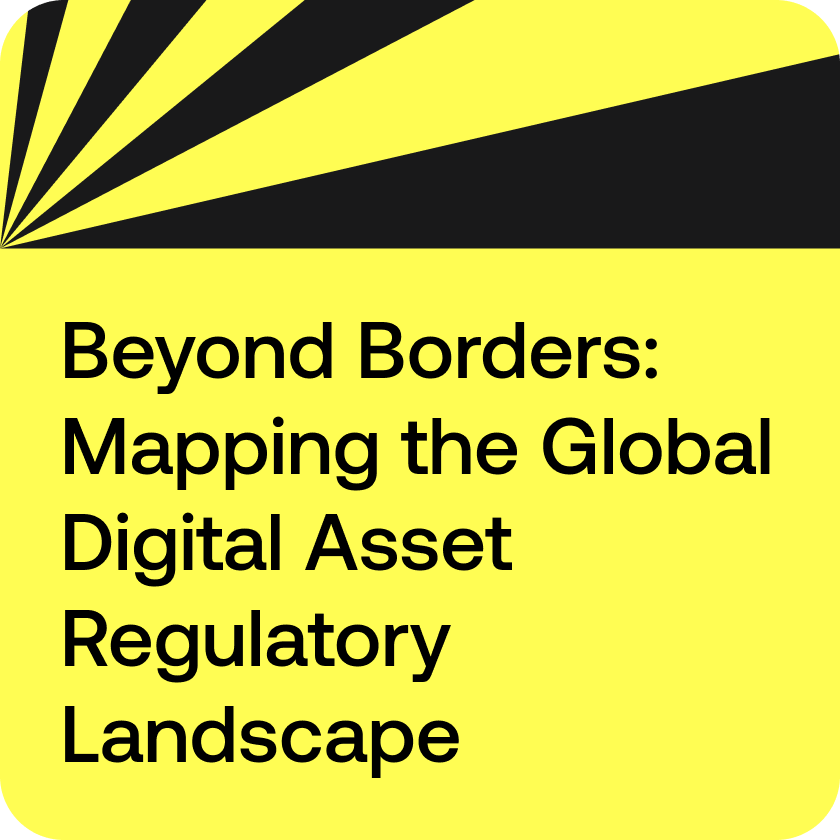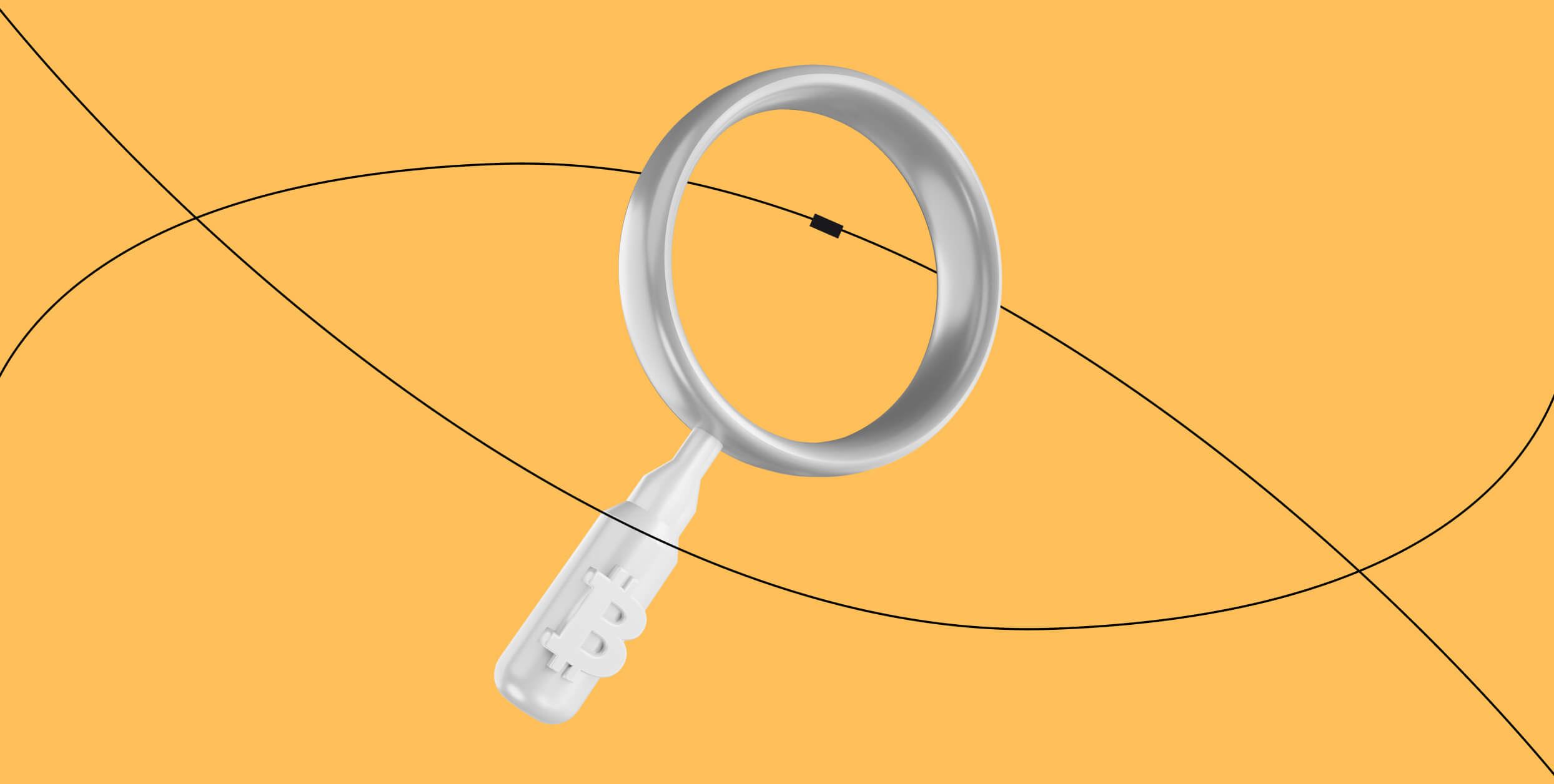An analysis of current darknet entities and their interactions with other entity types in Q1 2021, in comparison with historical dynamics over the last four years.
Key findings:
2021:
- The amount of bitcoin transferred between darknet entities and other entity types declined in Q1 2021 compared to the same period a year ago.
- The amount transferred between darknet entities and other entity types in Q1 2021 in USD slightly reduced too.
- The overall share (sent and received) of darknet interactions (transfers) with exchanges with KYC requirements has been decreasing.
2020:
- In retrospect, in Q1 2020 there was a rapid growth trend in the amount of bitcoin sent from darknet entities to mixers compared to the rest of 2020.
- During the rest of 2020, this trend declined, and there were not such large amounts transferred in other quarters in 2020 as there were in Q1 2020.
Report definitions:
Exchanges with KYC: exchanges with mandatory Know Your Customer (KYC) procedures, that will not allow the withdrawal of cryptocurrency or fiat money without ID confirmation.
Exchanges without KYC: exchanges that allow the withdrawal of cryptocurrency or fiat money without any mandatory KYC procedures.
Mixers: services for mixing cryptocurrency funds from different sources with other funds, to obscure the trail back to the original source.
Darknet entities: entities that operate via the darknet and offer illegal services or goods in exchange for (mainly) cryptocurrency.
Stolen coins: entities that have taken possession of someone else’s cryptocurrency by hacking.
Other entity types: includes payment processors, gambling services, illegal services, miners, marketplaces, online wallets, ransom extortioners, scams, stolen coins, and/or other entity types.
DeFi: Decentralized Finance
DEX: Decentralized Exchange
FATF: Financial Action Task Force
VASP: Virtual Asset Service Provider
Introduction:
The immutability and transparency of the Bitcoin Blockchain enables us to identify suspicious activity on a global level, an effort that would be impossible with fiat payments. Additionally, guidelines and regulations that have been laid out by the Financial Actions Task Force (FATF) and the European Union (EU) for exchanges, online wallets, and other Virtual Asset Service Providers (VASPs) have significantly contributed to the identification of fund source purity.
The public nature of transactions on the blockchain, paired with the most recent introductions of global and regional digital asset regulations (aimed at preventing illicit activity involving cryptocurrencies), makes it even easier to identify suspicious activities through analytical tools like Crystal.
This report represents both direct and indirect bitcoin transactions between clusters owned by darknet entities, as well as non-darknet and unidentified entities. The report includes transactions between darknet and other types of entities, as well as unknown intermediate addresses (ie. addresses that do not belong to any identified services.)
NOTE: This analytics report was compiled using the Crystal Blockchain platform All Connections solution on the Bitcoin Blockchain.
How this analytics report was compiled:
- The report compares changes across two metrics – changes in the amount of bitcoin (actual) and changes in value (measured in USD).
- For clarity, we use USD and $ to indicate the overall value and use numbers only when indicating the amount of bitcoin (by the number of coins) observed.
Darknet entity interaction statistics Q1 2017 – Q1 2021

For example:
- In Q4 2017, bitcoin amounting to $184 million USD was sent by darknet entities, with $177 million USD received by darknet entities.
- In Q3 2020, bitcoin amounting to $469 million USD was sent by darknet entities, with $443 million USD received by darknet entities.
- In Q1 2021 bitcoin amounting to $407 million USD was sent by darknet entities, with $400 million USD received by darknet entities.
NOTE: All USD amounts are monthly bitcoin amounts multiplied by the average monthly price of BTC.
Darknet & bitcoin usage changes:
- The amounts (in USD) of bitcoin sent and received by darknet entities were growing until Q3 2020
- In Q1 2021 the amounts of bitcoin sent and received by darknet entities dropped to less than in Q1 2020.
- The total amount received by darknet entities decreased from 50k bitcoin in Q1 2020 to 9k bitcoin in Q1 2021.
- The total amount sent by darknet entities also decreased from 53k bitcoin in Q1 2020 to 9k bitcoin in Q1 2021.
WHY? These drops in bitcoin received and sent are mainly due to the significant growth of the price of BTC, however overall activity of darknet entities on the Bitcoin Blockchain declined too.
USD vs. BTC: Less rapid drops were considered in amounts in USD. We can see that darknet entities received and sent a slightly decreased amount of fiat or money in general
— from $410m in Q1 2020 to $400m in Q1 2021 and from $433m in Q1 2020 to $407m in Q1 2021 respectively.
A shift in darknet & crypto dynamics:
- There’s been an overall reduction in darknet entity activity on the Bitcoin Blockchain, which could be due to the growing popularity of other blockchains and their tokens.
- There is likely also be an increase in DeFi (Decentralized Finance) and DEX (Decentralized Exchange) platform usage by darknet entities.
Entities sending bitcoin to the darknet Q1 2017 – Q1 2021
- There’s been an overall reduction in darknet entity activity on the Bitcoin Blockchain, which could be due to the growing popularity of other blockchains and their tokens.
- There is likely also be an increase in DeFi (Decentralized Finance) and DEX (Decentralized Exchange) platform usage by darknet entities.
Entities sending bitcoin to the darknet Q1 2017 – Q1 2021

Usage of exchanges with (or without) KYC verification:
Darknet entities often solicit exchanges without strict KYC verification requirements (to avoid financial crime and money laundering restrictions). The share of all bitcoin received by darknet entities from exchanges without KYC slightly dropped in Q1 2021 compared to Q1 2020 – from 46% to 40% respectively, as compared to the consistent growth we saw throughout 2020.
The share of bitcoin received from exchanges with KYC verification requirements has also been decreasing. In Q1 2020 it was 28%, where, in Q1 2021 it dropped to 19%. More new exchanges are implementing KYC procedures due to requirements from the FATF, because of that users prefer to choose to avoid KYC verification while interacting with darknet entities.
Usage of darknet to darknet entity (direct transfers):
The share of bitcoin sent from one darknet entity to another (i.e., all transactions between different darknet entities) stayed relatively flat in Q1 2020 compared to in Q1 2021 – 18%.
This stable share could also indicate that darknet users are still trying to hide their bitcoin flows and transfers inside the darknet itself, avoiding the risk of having their activities unveiled by other entities (like exchanges) that have implemented FATF requirements.
Increase in share of stolen bitcoin (hydra marketplace):
There was also a noticeable growth in the share of received stolen bitcoins in Q1 2021. The main contribution to this was made when the Hydra marketplace received coins (stolen in 2016 from Bitfinex) that started to move in Q4 2020 and reached the darknet marketplace in Q1 2021.
Entities receiving bitcoin from the darknet Q1 2017 – Q1 2021

Changing dynamics with mixers (Hydra & Wasabi):
The most notable change in how darknet entities send bitcoin is the growing use of mixers. Before Q3 2019, only 1-3% of bitcoin was sent to such services. In Q1 2020, it dramatically jumped to 20% and then declined to 10% until the end of 2020. It stopped at the 7% level in Q1 2021. The jump in Q1 2020 was mainly contributed to the interaction between the Hydra marketplace and the Wasabi mixer.
Decreased interaction with exchanges with KYC:
- The share of bitcoin sent to exchanges with verification requirements fell from 15% in Q1 2020 to 11% in Q1 2021.
- This is likely in response to increased regulation and verification processes for exchanges.
- This led darknet bitcoin owners to use other services to obfuscate the source of their coins.
Increased interaction with exchanges without KYC:
- Entities from the darknet also sent a bigger share of bitcoin to exchanges without verification requirements.
- In Q1 2020 it was 48%; in Q1 2021 the amount sent to exchanges without KYC increased to 64% of all bitcoin.
Darknet interaction with exchanges with KYC Q1 2017 – Q1 2021

For example:
- In Q4 2017, darknet entities received a total of $86 million USD in bitcoin from such exchanges and sent a total of $61 million to these exchanges.
- In Q3 2020, darknet entities received a total of $62 million USD in bitcoin from such exchanges and sent a total of $55 million to these exchanges.
- In Q1 2021, darknet entities received a total of $45 million USD in bitcoin from such exchanges and sent a total of $32 million to these exchanges.
Darknet dynamics with kyc verified exchanges:
The amount of bitcoin received by darknet entities from exchanges with KYC requirements significantly reduced from 8,800 total bitcoin in Q1 2020 to only 1,067 total bitcoin in Q1 2021. Across this same time period, the amount of bitcoin sent by darknet entities to exchanges with verification requirements dropped from 6,308 total bitcoin to 734 total bitcoin.
The amount of bitcoin sent (in USD) from the darknet to exchanges with verification requirements also dropped, from $52m in Q1 2020 to $32m in Q1 2021. And darknet entities received bitcoin (in USD) from exchanges with verification requirements also decreased – $45m in Q1 2021 compared with $72m Q1 2020. This is likely due once again to the increased KYC/AML requirements at these exchanges.
Darknet interaction with crypto mixers Q1 2017 – Q1 2020

For example:
- In Q4 2017, darknet entities sent $1 million USD of bitcoin to mixer services and received approximately $172,260 USD of bitcoin from said services.
- In Q3 2020, darknet entities sent $41 million USD of bitcoin to mixer services and received approximately $5 million USD of bitcoin from said services.
- In Q1 2021, darknet entities sent $21 million USD of bitcoin to mixer services and received approximately $10 million USD of bitcoin from said services.
Overall, bitcoin mixing services continue to grow in popularity thanks to their use by darknet entities.
Increased darknet usage of crypto mixers:
- The USD amount of bitcoin sent to mixers by darknet entities rose significantly in Q1 2020 – from $3m in Q1 2019 to $71m bitcoin in Q1 2020. The same growth was also observed in bitcoin amounts.
- While the subsequent amounts in Q2-Q4 2020 were less than in Q1 2020, overall activity between darknet entities and mixers was high indicating rapid adoption of crypto mixers by darknet entities.
- We see that in Q1 2021 the USD amount sent to mixers reduced to $21m, but it’s too early to make conclusions about this reduction of sent amounts from darknet entities to mixing services in 2021.
- The amount of bitcoin received by darknet entities from mixing services has been growing since Q1 2019 and reached $10m in Q1 2021.
- From this analysis, it seems that mixers are becoming more popular for withdrawing from and depositing to darknet entities.
Darknet interaction with other darknet entities Q1 2017 – Q1 2021

For example:
- In Q4 2017, $32 million in bitcoin was transferred amongst darknet entities.
- In Q3 2020, $50 million in bitcoin was transferred amongst darknet entities.
- In Q1 2021, $43 million in bitcoin was transferred amongst darknet entities.
Darknet to darknet crypto activity:
Overall, darknet entities are sending more and more bitcoin amongst themselves, in comparison to pre-2020. The sum of transferred amounts between darknet entities directly grew significantly (looking at both the amount of bitcoin and the value in USD) between 2017 and 2020. However, in Q1 2021 the amount transferred between darknet entities slightly reduced to $43m, compared to $46m in Q1 2020.
In Q1 2020, bitcoin transfers between darknet entities amounted to 5,585 bitcoin, while in Q1 2021 it was only 993 bitcoin. Despite the reduction in BTC, the amount in USD remained stable. This seems to indicate the darknet ecosystem is remaining stable in size right now, or its revenue streams are becoming more directly interconnected (darknet to darknet).
Darknet & crypto dynamics are changing:
In this report, we observed that in Q1 2021 the flow of bitcoin funds to and from darknet entities had dropped in bitcoin value and slightly decreased in USD value compared to Q1 2020. This may be partly explained by the growing capitalization of bitcoin. However, the overall decreasing bitcoin flow to and from these entities may also be explained by the growing popularity of other blockchains’ tokens and DeFi platform usage. Exchanges with KYC are becoming a much less popular way to withdraw bitcoin from darknet entities, while mixers are becoming more popular to withdraw from darknet entities.
The amount of bitcoin and USD transferred between darknet entities since 2020 also grew compared to the previous period. However, in Q1 2021 there was a small decrease in amounts from $46m in Q1 2020 to $43m in Q1 2021. Bitcoin is available to anyone in the world to use — this means that while it is increasingly a place for legitimate business, it is still used for malicious and criminal activities.
What is reassuring, however, is that all potentially suspicious activity on the blockchain can be detected due to blockchain’s immutability and transparency. This paired with the introduction of digital asset regulations by the FATF and the EU, as well as local regulations around the world, will increase the potential for identification of fund source purity, aided even further by analytics tools like Crystal Blockchain.
To learn how Crystal can help transform your approach to crypto compliance, book a demo here.




